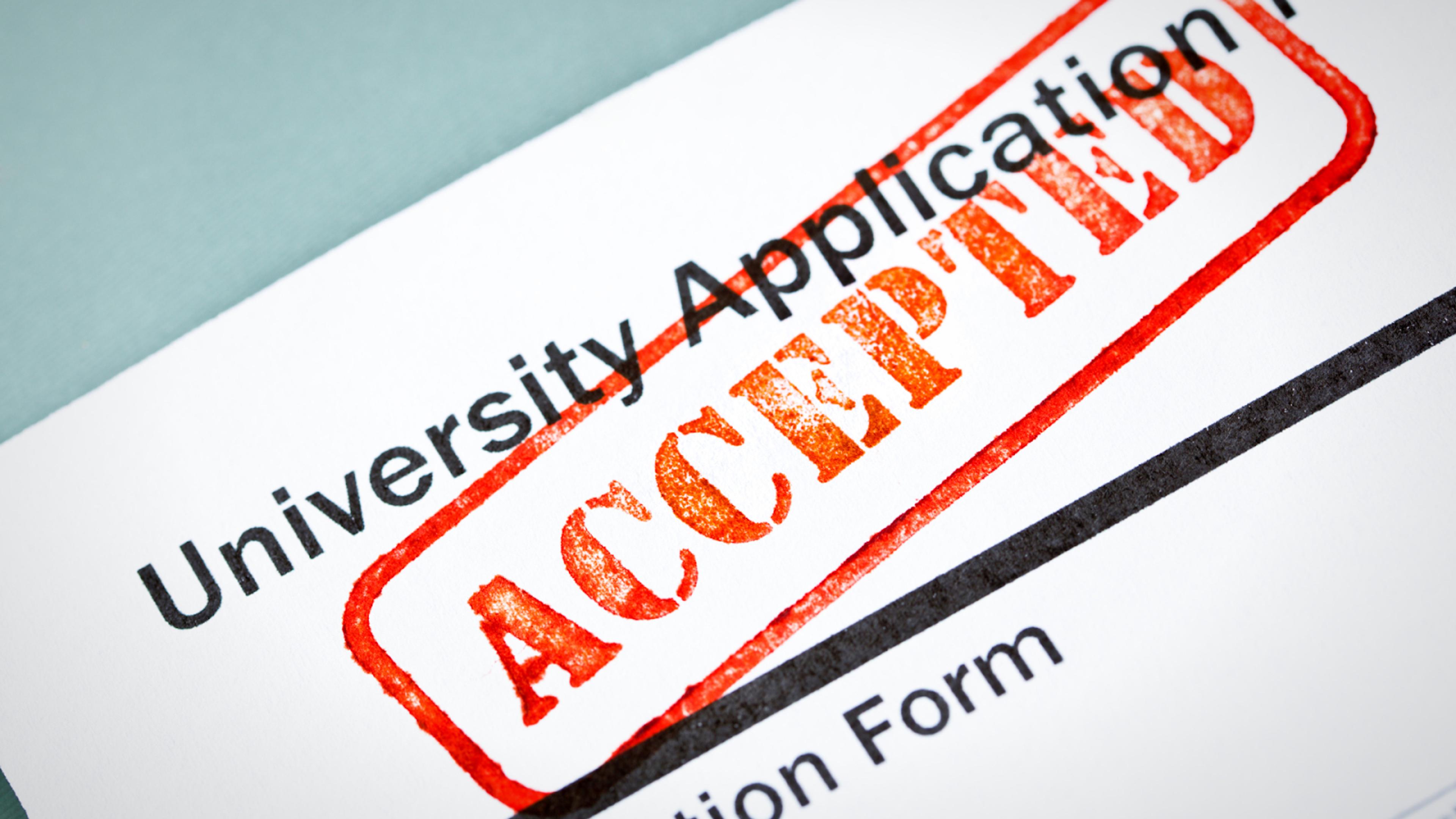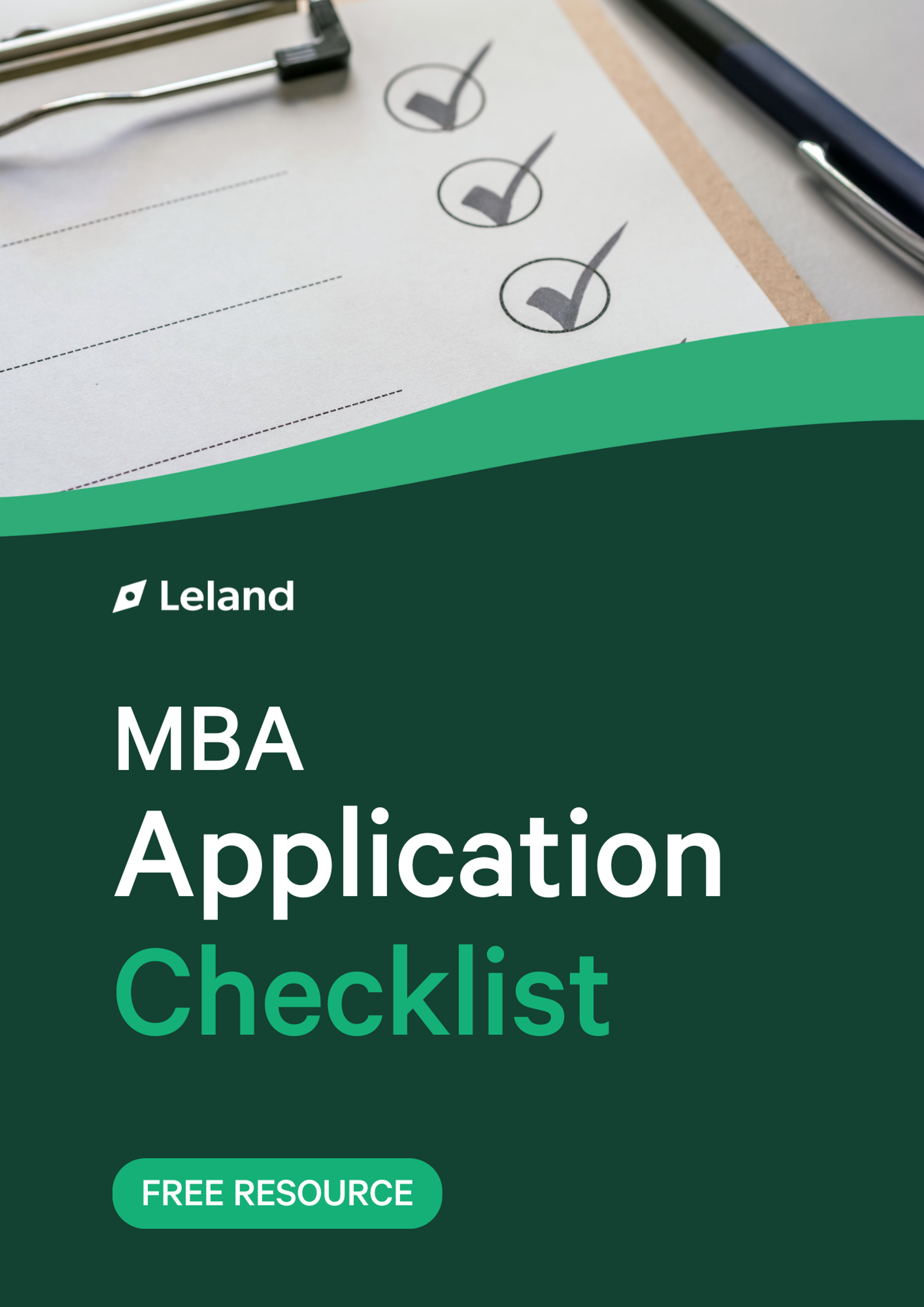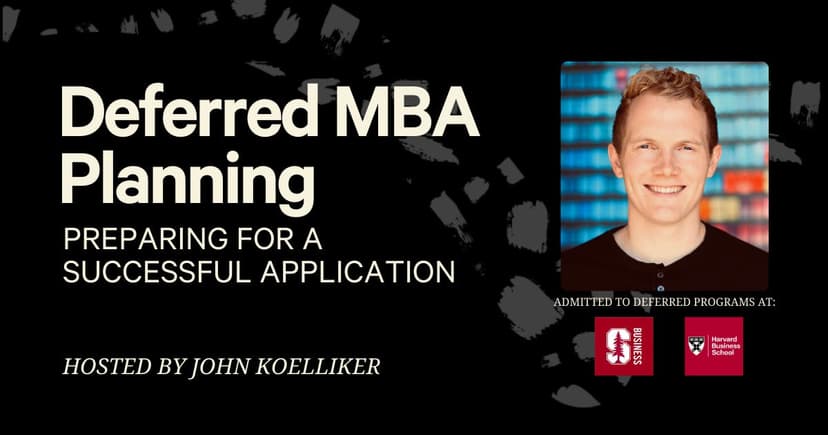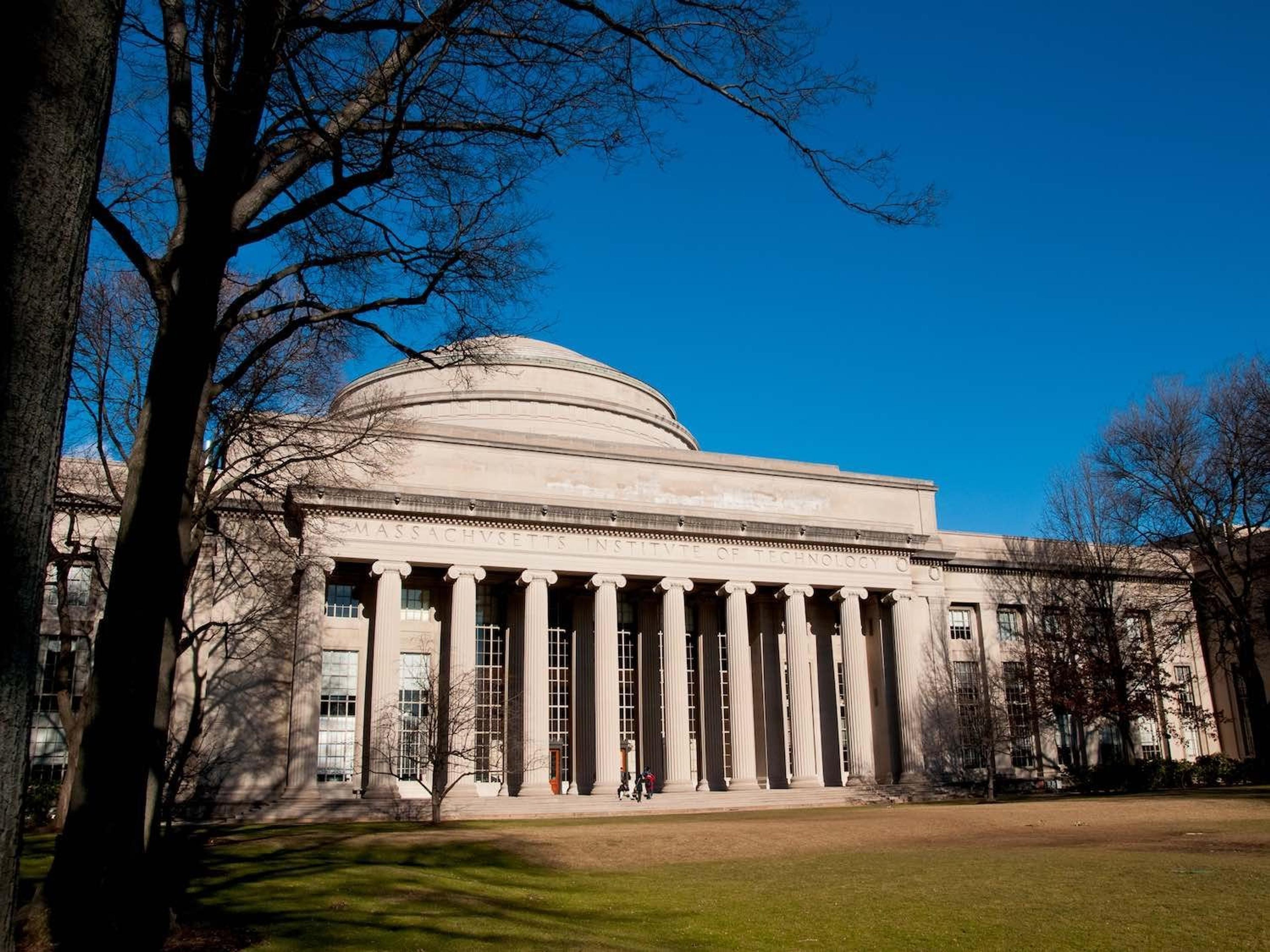
Join a free event
Learn from top coaches and industry experts in live, interactive sessions you can join for free.
Table of Contents
When applying to top MBA programs, understanding acceptance rates and class profiles is essential. This data helps you target the right schools based on your academic, professional, and leadership background.
This updated 2025 guide brings together the latest available numbers on acceptance rates, GMAT/GRE scores, GPA, and diversity metrics for the top 25 U.S. business schools, including Harvard Business School, Stanford GSB, Wharton, Columbia, MIT Sloan, and others.
Whether you’re aiming for a highly selective program or a competitive target school, this analysis will help you understand your standing and how to build a stronger application.
For more information on how to get into top business schools, check out these free resources:
- The Complete MBA Application Guide
- How to Write a Powerful MBA Essay -- With Examples
- A Comprehensive MBA Application Timeline -- With Chart
Why Do Acceptance Rates Matter?
The Role of Acceptance Rates in Choosing a Business School
MBA acceptance rates give you a clear understanding of how competitive a business school’s program is. Schools with lower acceptance rates are more selective, meaning they admit fewer students. For example, Harvard Business School has one of the lowest acceptance rates in the world, making it a highly competitive option. Understanding these rates allows you to evaluate your chances of getting accepted into a particular school, based on factors like your GMAT scores, years of work experience, and GPA.
Prospective students often use acceptance rates as a measure of the difficulty of admission. If you're targeting a school like Stanford GSB, with an acceptance rate under 7%, you should ensure your qualifications stand out, including strong leadership experiences and career achievements.
Factors That Influence Acceptance Rates
While MBA programs like the Wharton MBA or Columbia Business School have relatively higher acceptance rates, they also focus on unique factors in their admissions process. These include:
- Years of work experience: On average, top schools look for MBA candidates with 4–5 years of professional experience.
- GMAT and test scores: Strong scores are critical in competitive schools, especially for programs like those at Stanford GSB and Wharton.
- Leadership and career goals: Successful applicants are often evaluated based on their ability to lead teams and their clear career trajectory.
Class Profiles of Top MBA Programs
What is an MBA Class Profile?
An MBA class profile provides detailed data about the incoming students, including their GMAT scores, average GPA, and years of work experience. Understanding the class profile is essential in determining whether a school aligns with your qualifications. For example:
- Stanford GSB admits a class with an average GMAT score of 730, an average GPA of 3.7, and a heavy emphasis on leadership.
- Wharton tends to admit MBA candidates with strong professional backgrounds and diverse work experience.
Diversity in MBA Classes
Top business schools like Harvard Business School, Columbia Business School, and NYU Stern actively seek diversity in their student bodies. This includes students who identify as first-generation, those who come from more than one race, and students who are permanent residents. Schools like Stanford GSB and Duke Fuqua focus on building classes with diverse backgrounds, including those with experience in the military or in other racial categories.

MBA Application Checklist
Stay on track with your MBA apps. Get a full customizable checklist of what to do, when, and how to do it well.
MBA Acceptance Rates Overview
1. Stanford Graduate School of Business (GSB)
GSB Class Profile
- Women: 44%
- Students of Color: 53%
- International: 39%
- First-Generation: 12%
- Average Years of Work Experience: 5.1
- Average GPA: 3.75
- Average GMAT: 738
- Average GRE: 163 (Verbal), 164 (Quantitative)
GSB Acceptance Rate: 5-6%
- Number of Applicants: 7,295
- Class Size: 424
Stanford continues to be the most selective MBA program worldwide. Its small class size and emphasis on leadership, innovation, and personal reflection make it intensely competitive. Diversity remains a priority.
For more info on Stanford’s Graduate School of Business, check out:
- Stanford GSB MBA Curriculum - Core, Electives, & Specializations
- Stanford GSB MBA Essays: Prompts, Tips, & Examples
- Stanford GSB: MBA Tuition & Fees Breakdown
- The 5 Best Classes at Stanford's Graduate School of Business
2. Harvard Business School (HBS)
HBS Class Profile
- Women: 45%
- International: 35%
- First-Generation: 11%
- Average Years of Work Experience: 5
- Average GPA: 3.69
- Median GMAT: 740 (Verbal: 42, Quantitative: 49)
- Median GRE: 163 (Verbal and Quantitative)
HBS Acceptance Rate: 9%
- Number of Applicants: 9,856
- Class Size: 930
If you’re looking to get a better understanding of HBS, read our articles here:
- Applying to Harvard Business School: Story of a Current Student
- Harvard Business School MBA Essay: 5 Things to Do
3. University of Pennsylvania Wharton School of Business
Wharton Class Profile
- Women: 47%
- International: 31%
- LGBTQ+ Students: 10%
- First-Generation: 11%
- Average Years of Work Experience: 5
- Average GPA: 3.6
- Average GMAT: 732
- Average GRE: 162 (Verbal), 163 (Quant)
Wharton Acceptance Rate: 11-12%
- Number of Applicants: 7,322
- Class Size: 866
Wharton remains one of the most competitive schools, attracting candidates with strong analytical and professional experience. It emphasizes teamwork, leadership, and global perspective.
Read through some more of our resources on Wharton here:
4. University of Chicago Booth
Booth Class Profile
- Women: 42%
- Countries Represented: 66%
- International: 35%
- First-Generation: 11%
- LGBTQ+: 9%
- Veterans: 10%
- Average Years of Work Experience: 5
- Average GPA: 3.6
- Average GMAT: 730
- Average GRE: 161 (Verbal), 163 (Quantitative)
Booth Acceptance Rate: 12%
- Number of Applicants: 5,125
- Class Size: 632
Chicago Booth maintains its reputation for academic rigor and flexibility. Known for its data-driven approach to business, Booth attracts candidates with strong quantitative backgrounds and intellectual curiosity.
For a better overview of Chicago Booth’s curriculum and admissions process, read through our resources here:
- Chicago Booth MBA Essays: 5 Expert Tips
- Chicago Booth MBA Class Profile: Key Insights & Takeaways
- How to Answer the “Why Booth?” Interview Question
5. Northwestern University Kellogg School of Management
Kellogg Class Profile
- Women: 50%
- First-Generation: 10%
- International: 40%
- LGBTQ+: 11%
- Average Years of Work Experience: 5
- Average GPA: 3.7
- Average GMAT: 733
- Median GRE: 162 (Verbal), 163 (Quantitative)
Kellogg Acceptance Rate: 20-21%
- Number of Applicants: *This year's numbers have not been released
- Class Size: 524
Kellogg values collaboration, teamwork, and leadership across industries. Its 2026 class is among the most gender-balanced, with 50% women and 40% international students.
Check out more on Kellogg’s MBA program here:
6. Massachusetts Institute of Technology Sloan
Sloan Class Profile
- Women: 49%
- Minority Students: 15%
- First-Generation: 10%
- International: 40%
- Average Years of Work Experience: 5
- Average GPA: 3.7
- Median GMAT: 730
- GRE Range: 157-168 (Verbal), 159-170 (Quantitative)
Sloan Acceptance Rate: 17.8%
- Number of Applicants: *This year's numbers have not been released
- Class Size: 433
MIT Sloan looks for analytical thinkers and innovators. The class is diverse. Sloan evaluates applicants holistically, emphasizing personal character and community contribution.
For more information on MIT Sloan, read our guides:
7. Columbia University Business School
Columbia Class Profile
- Women: 44%
- Minority Students: 43%
- International: 47%
- Average Years of Work Experience: 5
- Average GPA: 3.5
- Average GMAT: 730
Columbia Acceptance Rate: 15.26%
- Number of Applicants: 5,895
- Class Size: 900
Columbia’s New York City location makes it ideal for finance, consulting, and entrepreneurship.
Read more articles on Columbia Business School’s MBA programs here:
8. University of California, Berkeley Haas School of Business
Haas Class Profile
- Women: 42%
- Minority Students: 51%
- First-Generation: 15%
- International: 38%
- LGBTQ+: 19%
- Veterans: 7%
- Average Years of Work Experience: 5.6
- Average GPA: 3.65
- Average GMAT: 730
- Average GRE: 161 (Verbal), 162 (Quant)
Haas Acceptance Rate: 17.6%
- Number of Applicants: *This year's numbers have not been released
- Class Size: 295
Haas prioritizes values-driven leadership and diversity. It’s especially attractive to those pursuing sustainability, tech, and social impact careers.
If you’re looking to get a better understanding of Berkeley Haas, we recommend looking through some of our articles here:
- Berkeley Haas MBA Essays Guide: Overview, Tips & Examples
- How to Nail Your Berkeley Haas MBA Interview: Overview, Questions, & Tips
9. Yale University School of Management (SOM)
Yale SOM Class Profile
- Women: 39%
- Students of Color: 56%
- International: 48%
- LGBTQ+: 12%
- First-Generation: 20%
- Average Years of Work Experience: 4.9
- Average GPA: 3.69
- Median GMAT: 730
- Median GRE: 164 (Verbal), 166 (Quantitative)
Yale SOM Acceptance Rate: 23.7%
- Class Size: 347
Yale SOM continues to emphasize global leadership and public-private impact.
Read our articles here:
- Yale SOM MBA Essays Guide: Overview, Tips & Examples
- How to Nail Your Yale SOM MBA Interview: Overview, Questions, & Tips
10. Dartmouth College Tuck School of Business
Tuck Class Profile
- Women: 44%
- Minority Students: 29%
- International: 30%
- LGBTQ+: 7%
- Students with children: 4%
- First-Generation: 15%
- Average GPA: 3.6
- Average GMAT: 727
- Average GRE: 161 (Verbal), 161 (Quantitative)
Tuck Acceptance Rate: 22-23%
- Class Size: 296
Tuck is known for its tight-knit community and focus on collaboration. The school values emotional intelligence, personal growth, and teamwork alongside academic excellence.
Read more on Dartmouth’s MBA program here:
- Dartmouth Tuck MBA Essays Guide: Overview, Tips & Examples
- How to Nail Your Dartmouth Tuck MBA Interview: Overview, Questions, and Tips
Coach Recommendations
To give yourself the best chance of getting into a top MBA program, we highly recommend working with a Leland expert MBA admissions coach. Below are some of our top coaches. Browse all of them here.
11. New York University Stern School of Business
Stern Class Profile
- Women: 47%
- Minority Students: 46%
- International: 40%
- LGBTQ+: 11%
- Veterans/Active Duty: 11%
- Average Years of Work Experience: 5
- Average GPA: 3.64
- Average GMAT: 733
- Average GRE: 164 (Verbal), 164 (Quantitative)
Stern Acceptance Rate: 25.7%
- Number of Applicants: 4,550
- Admitted Students: 1,141
- Class Size: 352
Stern combines strong academics with flexibility, allowing students to tailor their MBA path.
For a better overview of the programs, read our articles here:
- How to Nail the NYU "Pick Six" MBA Application Essay
- How to Nail Your NYU Stern MBA Interview: Overview, Questions, & Tips
12. Duke University Fuqua School of Business
Fuqua Class Profile
- Women: 51%
- Students with Color: 56%
- First-Generation: 18%
- International: 41%
- Military: 11%
- Have a Partner: 37%
- Average Years of Work Experience: 6
- Average GPA (middle 80%): 3.17-3.89
- GMAT Range: 660-760
- GRE Range: 305-330
Fuqua Acceptance Rate: 22-25%
- Class Size: 427
Duke Fuqua values “leaders of consequence.” They emphasize teamwork, collaboration, and service leadership.
Check out our articles here:
- Duke Fuqua MBA Essays Guide: Overview, Tips & Examples
- How to Nail Your Duke Fuqua MBA Interview: Overview, Questions, & Tips
13. University of Michigan, Ann Arbor Ross School of Business
Ross Class Profile
- Women: 40%
- Students of Color: 53%
- International: 36%
- LGBTQIAS+: 9%
- Military: 15%
- First Generation: 22%
- Average Years of Work Experience: 6
- Average GPA: 3.42
- Average GMAT: 728
- Average GRE: 159 (Verbal), 162 (Quantitative)
Ross Acceptance Rate: 20%
- Class Size: 396
Ross balances strong academic standards with experiential learning through its renowned “MAP” program.
14. University of Virginia Darden School of Business
Darden Class Profile
- Women: 38%
- Minority Students: 23%
- International: 30%
- Military: 14%
- Average Years of Work Experience: 5.7
- Average GPA: 3.56
- Average GMAT: 718
- Average GRE: 321 (combined)
Darden Acceptance Rate: 26-36%*
*Estimates vary within this range.
- Class Size: 355
Darden focuses on leadership through the case method and is known for its highly engaged community.
Read more here:
- Why I Chose Darden for My MBA Program
- How to Nail Your UVA Darden MBA Interview: Overview, Questions, & Tips
15. Cornell University Johnson Graduate School of Management
Johnson Class Profile
- Women: 41%
- Underrepresented Minorities: 22%
- International: 35%
- US Military: 13%
- Average Years of Work Experience: 5.3
- Median GPA: 3.4
- Median GMAT: 710
- Average GRE: 320 (combined)
Johnson Acceptance Rate: 39.6%
- Class Size: 282
Cornell Johnson offers a close-knit program emphasizing innovation and management in tech, consulting, and finance.
Want more information on Cornell Johnson’s MBA program? Read through here:
16. Carnegie Mellon University Tepper School of Business
Tepper Class Profile
- Women: 31%
- Minority Students: 52%
- International: 39%
- LGBTQ+: 11%
- Average Years of Work Experience: 5.7
- Average GPA: 3.25
- Average GMAT: 700
- Average GRE: 323 (combined)
Tepper Acceptance Rate: 27%
- Class Size: 156
Tepper’s analytical rigor attracts candidates from engineering and quantitative backgrounds.
17. University of Southern California Marshall School of Business
Marshall Class Profile
- Women: 35%
- Students of Color: 20%
- International: 41%
- LGBTQ+: 9%
- US Military: 10%
- Average Years of Work Experience: 5.5
- Average GPA: 3.5
- Average GMAT: 722
- Average GRE: 160 (Verbal), 163 (Quant)
Marshall Acceptance Rate: 28-30%
- Class Size: 199
Marshall’s program is ideal for professionals in entrepreneurship and entertainment.
18. University of California, Los Angeles Anderson School of Management
Anderson Class Profile
- Women: 43%
- LFBTQ+: 8%
- US Military: 4%
- International: 41%
- Average Years of Work Experience: 5.4
- GPA Range (middle 80%): 3.1-3.8
- Average GMAT: 714
- Average GRE: 162 (Verbal), 165 (Quantitative)
Anderson Acceptance Rate: 40%
- Number of Applicants: 3,079
- Class Size: 305
Anderson emphasizes innovation, leadership, and inclusion. Check out more guides here:
- The UCLA Anderson MBA Program: Expectation Vs. Reality
- UCLA Anderson MBA Essays Guide: Overview, Tips & Examples
- How to Nail Your UCLA Anderson MBA Interview: Overview, Questions, & Tips
19. University of Texas at Austin McCombs School of Business
McCombs Class Profile
- Women: 33%
- Minority Students: 23%
- International: 29%
- US Military: 14%
- First-Generation: 15%
- Average Years of Work Experience: 6
- Average GPA: 3.48
- Average GMAT: 704
- Average GRE: 159 (Verbal), 162 (Quantitative)
McCombs Acceptance Rate: 28.5%
- Class Size: 255
- Dual Degree Students: 22%
McCombs offers a strong balance between tech, consulting, and entrepreneurship, with access to Austin’s thriving startup scene.
20. University of North Carolina, Chapel Hill, Kenan-Flagler Business School
Kenan-Flagler Class Profile
- Women: 31%
- International: 43%
- Military: 12%
- Average Years of Work Experience: 5
- Average GPA: 3.42
- Average GMAT: 707
Kenan-Flagler Acceptance Rate: 44-51%
- Class Size: 249
Kenan-Flagler focuses on leadership development, teamwork, and ethics. The program maintains a diverse international presence.
21. Georgetown University McDonough School of Business
McDonough Class Profile
- Women: 30%
- Minority Students: 14%
- International: 49%
- Military: 12%
- Average Years of Work Experience: 5.6
- Average GPA: 3.3
- Average GMAT: 696
- Average GRE: 319 (combined)
McDonough Acceptance Rate: ~30–50%
- Number of Applicants: 1,642
- Class Size: 263
Located in Washington, D.C., McDonough blends global business with policy and strategy. Nearly half of its MBA class is international.
22. University of Washington Foster School of Business
Foster Class Profile
- Women: 32%
- Students of Color: 59%
- International: 46%
- First-Generation: 16%
- Military: 29%
- Average Years of Work Experience: 6
- Average GPA: 3.4
- Average GMAT: 700
- Average GRE: 159 (Verbal), 160 (Quantitative)
UW Foster Acceptance Rate: ~40–45%
- Class Size: 118
Foster’s smaller class size fosters close community ties. Its graduates are highly sought after in consulting and tech sectors, particularly within the Pacific Northwest.
23. Indiana University (Bloomington) Kelley School of Business
Kelley Class Profile
- Women: 28%
- Minority Students: 21%
- International: 46%
- Average Years of Work Experience: 6.3
- Average GPA: 3.40
- Average GMAT: 683
- Average GRE: 158 (Verbal), 161 (Quant)
IU Kelley Acceptance Rate: ~30–40%
- Class Size: 103
Kelley offers strong ROI and career placement, with a collaborative culture and experiential learning emphasis.
24. Vanderbilt University Owen Graduate School of Management
Owen Class Profile
- Women: 29%
- Minority Students: 19%
- International: 30%
- Military: 22%
- Average Years of Work Experience: 6
- Median GPA: 3.4
- Average GMAT: 703
- Average GRE: 159 (Verbal), 159 (Quantitative)
Owen Acceptance Rate: 35-40%
- Class Size: 175
Owen provides a personalized MBA experience, emphasizing leadership and communication in small cohorts
25. Rice University Jones Graduate School of Business
Jones Class Profile
- Women: 39%
- Minority Students: 57%
- International: 41%
- First-Generation: 27%
- Average Years of Work Experience: 5.3
- Average GPA: 3.44
- Average GMAT: 698
- Average GRE: 157 (Verbal), 160 (Quantitative)
Jones Acceptance Rate: ~35–40%
- Class Size: 158
They offer a rigorous curriculum with strong ties to the energy and healthcare industries.
Read next:
Note: These numbers give a good rough estimate of the class profiles and application cutoffs. However, applications change every year depending on the number and profile of the applicants, the school’s priorities, and may not line up exactly with past years. Compile the best application you can, and shoot for the stars!
What It Takes to Get Into the Top MBA Programs
Academic Requirements
To be competitive at top business schools, you’ll need:
- GMAT scores are typically between 700-740 for the most selective programs (e.g., Stanford GSB, Harvard Business School).
- A solid GPA, with 3.5 or higher often the baseline.
- Test scores such as the GRE may also be accepted at schools like NYU Stern and Michigan Ross.
Work Experience and Leadership
Top MBA programs, like those at Harvard Business School, Wharton School, and Stanford GSB, value years of work experience and leadership potential. Prospective students typically need 4 to 6 years of professional experience to bring real-world insights into class discussions. However, it’s not just about how long you’ve worked; successful applicants demonstrate leadership by managing teams, driving projects, or taking initiative in their careers or communities.
Whether it's through GMAT scores, test scores, or how you show your career goals, admissions teams look for candidates who have proven their ability to lead and contribute meaningfully to their school’s MBA class. This blend of experience and leadership helps you stand out in the competitive admissions process at top business schools.
Diversity and Backgrounds
Top schools, like Wharton and Yale SOM, focus on creating diverse cohorts that reflect a variety of backgrounds. They encourage first-generation students and individuals from different races (including more than one race or other races) to apply. Applicants with international experience or those from non-traditional backgrounds (e.g., military experience) often stand out, as they bring unique skills and perspectives to the classroom.
This diversity enhances the learning experience and can improve your chances in the MBA programs at these best business schools.
How to Evaluate and Choose the Right Business School
Factors to Consider When Choosing a Business School
- Acceptance rates and class profiles are key in determining which schools fit your qualifications.
- Evaluate each school’s admissions process, including required GMAT scores, years of work experience, and leadership potential.
- Consider how the school aligns with your career goals, skills, and interests in management, business, or leadership.
Assessing Fit: Aligning Your Career Goals with Business School
When choosing a business school, it is important to match your career goals with the school’s strengths. If you’re focused on finance, schools like Wharton MBA or Columbia Business School are great choices because of their expertise in that area. If your passion is social impact or sustainability, consider schools like Berkeley Haas and Yale SOM, which specialize in these fields. Make sure the school fits your criteria and will help you build the skills you need for your future. Your resume and application should reflect this alignment, and doing so will increase your chances of success in your MBA program and career.
The Bottom Line
Choosing the right business school is a critical decision for your future career. Understanding MBA acceptance rates, class profiles, and the admissions process will help you target the schools that align with your qualifications and career goals. Whether you’re focused on finance, social impact, or another specialty, ensure your chosen program fits your leadership aspirations and offers the resources to support your growth.
By aligning your goals with a school’s strengths, you’ll be better prepared to craft a competitive application and improve your chances of acceptance. Stay informed, and make your MBA journey a strategic step toward achieving your career ambitions.
Get Into Your Dream Business School With the Help of an Expert
The best way to increase your odds of admission to an MBA program is to work with an expert who has been there and can provide personalized guidance based on your background and goals. Below are several popular coaches. Browse all here.
Read next:
- Rejected From an MBA Program? Here's What to Do Next
- An Expert Coach's Top Tips for Non-Traditional MBA Applicants
- A Guide to the Columbia Business School Essays (2023-2024)
- Top MBA Programs for Product Management
- Top MBA Programs for Investment Banking
FAQs
How Hard is it to Get Accepted for an MBA?
- Getting accepted to an MBA program, especially at top business schools, can be competitive, but it’s not impossible. Strong GMAT scores, relevant work experience, and a well-crafted application strategy are key factors in improving your chances. Consider applying to safety schools if your qualifications don't match the top programs' profiles.
What GPA is Too Low for an MBA?
- While most top programs prefer a GPA of 3.5 or higher, it’s not the only factor. Schools like Michigan Ross may be more flexible, especially if you have strong work experience or GMAT scores to back up your application.
Is MBA Value Declining?
- An MBA’s value is still significant, especially from top business schools with strong alumni networks and access to top employers. However, its worth depends on the program you choose and how well it aligns with your career goals.
Is MBA Hard for an Average Student?
- An MBA can be challenging for anyone, but it’s achievable for average students with dedication. The key is focusing on knowledge and building skills in areas like leadership and management, while considering safety schools if you're unsure about the most competitive programs.
Browse hundreds of expert coaches
Leland coaches have helped thousands of people achieve their goals. A dedicated mentor can make all the difference.

























